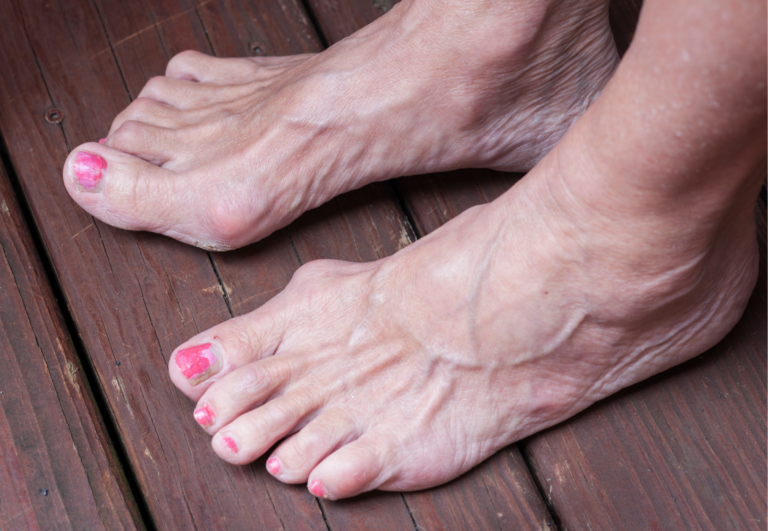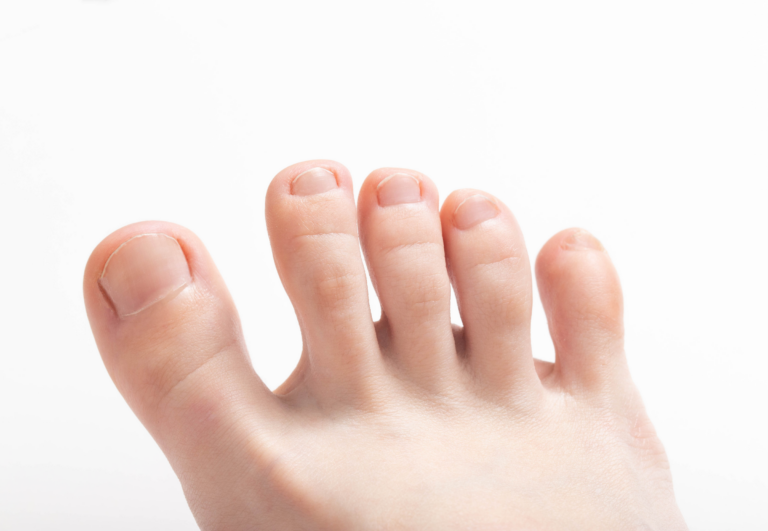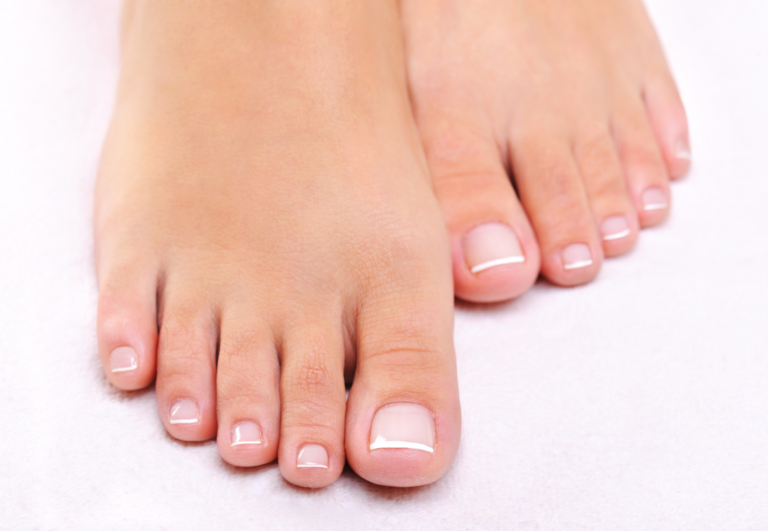Using Toe Spacers for Relaxation vs. Correction: Benefits and Distinctions Explained
Toe spacers, commonly recognized among those seeking both comfort and foot functionality, are increasingly gaining attention for their dual utility in relaxation and structural correction. They are simple devices that I have found can immensely benefit day-to-day foot comfort and health. When wedged between the toes, these spacers work diligently to re-educate the muscles of the feet, reducing discomfort from cramped footwear or standing for long periods.
In terms of relaxation, I’ve experienced that using toe spacers can help diffuse tension after a grueling day. The separation allows each toe to align in a more natural position, promoting relaxation and potentially improving circulation and balance within the foot. It can be quite a soothing experience, almost like a mini spa treatment for your feet, without any complex procedures or equipment.
The need for correction often stems from conditions such as bunions, hammer toes, or overlapping toes, where the toes are no longer ideally aligned. By wearing toe spacers for corrective purposes, I’ve observed that they provide a non-invasive option to gradually coax the toes back to their intended arrangement. This gentle persuasion can lead to improved toe alignment and function over time, but remember, significant changes should be approached with patience and possibly under professional guidance.
How To Use Toe Spacers for Relaxation
Toe spacers designed for relaxation purposes are focused on providing comfort and promoting balance rather than correcting toe deformities. They allow the toes to splay naturally, which can be particularly beneficial during activities like yoga, providing a stable base and enhancing the yoga experience.
Using toe spacers for relaxation involves a simple process:
- Clean Your Feet: Start with clean feet to maintain hygiene and prevent any irritation.
- Insert Toe Spacers: Gently place the toe spacers between each toe, ensuring a comfortable fit without any pinching or excessive pressure.
- Find a Comfortable Position: Sit or lie down in a comfortable position to relax while wearing the toe spacers.
- Start with Short Durations: Initially, wear the toe spacers for 10-15 minutes to allow your feet to adjust to the sensation.
- Breathe Deeply: Practice deep breathing exercises while you have the toe spacers on to enhance relaxation.
- Gradually Increase Time: As your feet become accustomed to the toe spacers, you can extend the duration for greater relaxation benefits.
- Combine with Foot Soaks or Massages: For added relaxation, consider using toe spacers during a warm foot soak or combine their use with a gentle foot massage after removal.
- Listen to Your Body: If at any point you feel discomfort, remove the toe spacers and give your feet a rest.
Using toe spacers can help stretch and realign your toes, which may reduce tension in your feet and promote a sense of relaxation throughout your body.

How Relaxation Toe Spacers Work
Relaxation toe spacers gently separate the toes, which can alleviate the pressure and discomfort from overlapping toes. By encouraging the toes to lie flat and apart from each other, these spacers help in reducing tension in the feet. This can promote a more natural toe alignment, which is key to achieving a relaxed state for the feet, especially after a long day of wearing constrictive shoes.
Choosing the Right Product for Comfort
- Material: Look for toe spacers made from medical-grade silicone as they offer durability and are hypoallergenic.
- Size: Ensure the spacers fit well; they should not be too tight or too loose.
- Design: Choose a design that allows for ample toe splay, fitting comfortably between each toe.
- Usability: For relaxation, prioritize toe spacers that can be worn while lounging or practicing foot-centric activities like yoga.
When selecting toe spacers, comfort should be your top priority. The right product should feel like a natural extension of your foot, offering a sense of ease and improving your overall balance and relaxation.
Using Toe Spacers for Correction
Utilizing toe spacers for the correction of foot deformities, such as bunions and hammertoe, is a practice rooted in improving foot health and function. These devices are beneficial for restoring natural toe alignment and enhancing overall foot strength.
Addressing Foot Deformities
Toe spacers can be an integral part of the strategy to correct common foot deformities. Bunions, which are bony bumps that form at the base of the big toe, can cause significant pain and mobility issues. Similarly, hammertoe refers to an abnormal bend in the middle joint of a toe, often resulting from tight footwear or muscle imbalance. By separating the toes and allowing them to lie flat, toe spacers help in reducing the pain associated with these conditions and work towards realigning the foot structure over time.
- Bunion relief: Regular use of toe spacers can alleviate pressure on the joint, helping to slow the progression of bunions.
- Hammertoe management: Spacers assist in keeping the affected toe in a more natural position, which can improve comfort and toe mobility.
Corrective Practices with Toe Spacers
When incorporating toe spacers into a foot correction routine, several practices can maximize their effectiveness. Consistent use is key for pain relief and improving foot strength. Over time, this can lead to better mobility and may even have a positive impact on arthritis, by facilitating better joint function through realignment.
- Consistency: Wearing toe spacers regularly, following a recommended schedule, is crucial for substantial results.
- Exercise: Complementary exercises that promote toe strength and flexibility can enhance the corrective effect of toe spacers.
Product Example: Correct Toes spacers are designed to be worn during normal daily activities, which allows for continuous corrective action and can lead to significant improvements in foot pain and function.
In summary, toe spacers targeted for correction can be a non-invasive solution for improving foot deformities, relieving pain, and strengthening foot muscles, thereby enhancing one’s quality of life.
Choosing Toe Spacers
When looking for toe spacers for relaxation or correction, it’s important to consider both their quality and price, as well as seek advice from a podiatrist to ensure they suit your specific needs.
Evaluating Quality and Price
Quality plays a pivotal role in the durability and effectiveness of toe spacers. Higher-priced models, such as Yoga Toes Gems or Correct Toes, often offer superior materials like medical-grade silicone. This material not only ensures flexibility and comfort but also longevity. When evaluating toe spacers, check for:
- Material: Preferably silicone or gel
- Durability: High-quality spacers should not tear easily
- Fit: They should fit comfortably between your toes
Price ranges depending on the brand and quality. Here’s a brief overview:
| Brand | Material | Price Range (approx.) |
|---|---|---|
| Correct Toes | Silicone | $60 – $100 |
| Yoga Toes Gems | Silicone | $30 – $50 |
| ZenToes Gel Toe Separators | Gel | $10 – $20 |
Remember, pricier toe spacers may offer better support and correction features.
Consulting with a Podiatrist
Before purchasing toe spacers, consulting with a podiatrist (DPM) is highly recommended. They can provide tailored advice based on your foot structure and health needs.
A podiatrist might suggest specific brands or types that are suitable for your condition, such as the ZenToes Gel Toe Separators for minor toe alignment issues, or the more corrective focused Correct Toes for significant misalignments. Consulting a professional ensures that the toe spacers you choose will not only be comfortable but will also contribute effectively to your foot health.
Long-Term Use and Care
When using toe spacers for either relaxation or correction, long-term care is crucial for maintaining both the longevity and efficacy of the products. Proper maintenance ensures a hygienic and stable use with each application.
Maintenance and Hygiene
I find it essential to clean toe spacers regularly to avoid bacterial growth and to promote good foot health. Whether your toe spacers are made of silicone or gel, they should be washed with mild soap and warm water after each use. It’s important to dry them completely before their next use to maintain balance and hygiene. Keep them in a breathable container to ensure they are ventilated.
When to Replace Your Toe Spacers
Over time, toe spacers can wear down and lose their stability, compromising their effectiveness. I recommend inspecting them monthly for signs of degradation, such as loss of shape, tears, or a sticky texture. Typically, they might need replacement every six months to a year, depending on the frequency of use and material quality. It’s beneficial to have a backup pair to maintain consistency in your foot care routine.
Toe Spacer Overview
Toe spacers, often made from silicone, gel, or foam, are designed to fit between the toes to help maintain proper alignment. They support toe health in various ways and can be used for both relaxation and correction of toe deformities.
Types and Materials
Silicone and Gel: These are the most common materials used for toe spacers. Silicone spacers are durable and can be washed and reused. Gel spacers tend to be softer and more pliable, which may provide added comfort for sensitive skin.
Foam: Less common than silicone or gel, foam toe spacers are usually disposable. They offer a cushioning effect but may not be as effective at maintaining toe separation due to their softer structure.
Benefits for Toe Health
- Alleviates Pain: Toe spacers can help reduce discomfort from pressure between toes caused by conditions such as bunions or hammertoes.
- Improves Alignment: By separating the toes, these devices encourage better posture and alignment, which can help with balance and stability.
Difference Between Relaxation and Correction
Relaxation: Using toe spacers for relaxation involves wearing them for short periods to help relieve stress on the feet. This can improve flexibility and reduce immediate discomfort.
Correction: Correction with toe spacers aims to reposition the toes over a more extended period. While they can offer temporary relief, toe spacers typically do not provide long-term structural correction without additional therapeutic strategies.





